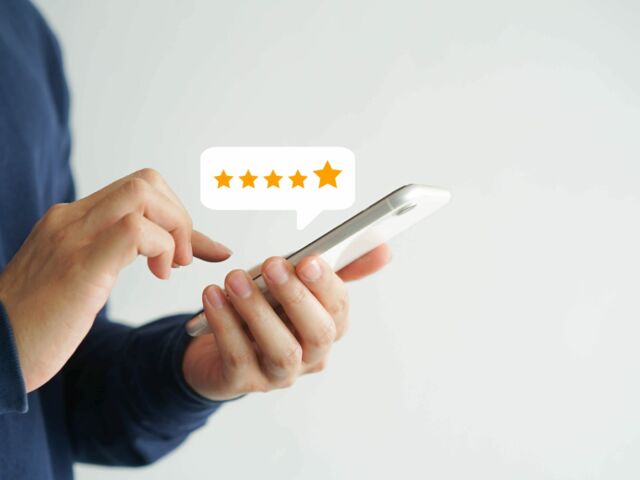Some may not realize it initially, but verbal communication is comprehended in so many more ways than just words alone. An interesting rule from Albert Mehrabian states, when it comes to face-to-face interaction, verbal communication is comprehended:
7% from the words that are actually spoken — 38% in how the words are spoken (tone of voice) –55% is from one’s facials expressions and body language.
Essentially, so much more goes into communicating and getting a message across that just the literal words coming out of your mouth. Being aware of the different ways you communicate is essential to successful customer service.
Let’s take a closer look at the last two percentages of tone and body language—specifically in a customer service setting.
You non-verbally communicate through:
Body Language
- Eye contact: Giving the customer consistent eye contact while communicating indicates you are engaged in the conversation. Not looking at them (i.e: staring at the wall, your hands or computer screen) shows that you aren’t actively listening (even if you are) and often comes off as rude and can be frustrating for the customer.
- Posture: If you are slouching or leaning against a wall while communicating with customers it shows laziness or a lack in care – essentially that you don’t want to be there or serve the customer.
- Facial expressions: When speaking and listening it is important to be conscious of your facial expressions and how they can enhance or take away from what you’re saying. Staring blankly or coolly at a customer can come off as negative or rude – all in all, it is very important to be mindful of what your face communicates. Of course, smiling is always a guaranteed positive expression.
- Gestures: Solidify what you want to say with hand gestures. This helps emphasize certain points to your customers who might be more visual learners (i.e.: pointing where to sign on a form along with your verbalization). Also, nodding when engaged in a conversation is a gesture that shows you are listening or understanding what the customer is saying.
Vocal Cues (Tone)
The tone in your voice alone can change a message’s meaning completely. You can say the same sentence with 20 different tones.
- Pitch: A higher pitch in your voice with customer’s sounds more pleasant and essentially is more inviting. Usually this pitch comes naturally when you smile.
- Volume: It is important to be aware of your volume. Speaking too softly can be frustrating and makes it hard for a person to hear or comprehend what you’re communicating. Speaking at a higher volume may come across as yelling and/or talking down to your customer. Be sure to find a happy medium.
- Articulation: Make sure you properly pronounce and articulate the words you say. Mumbling not only makes it hard for the customer to understand you but also implies non-verbally that you don’t care about answering the question and essentially serving them.
- Pauses: When you are involved in a conversation, pauses indicate non-verbally that you are thinking about/digesting what was said and/or formulating a response. Use pauses appropriately throughout a conversation.
- Silence: Silence truly speaks volumes. It is good to be silent when listening to a customer to show them respect, but when someone asks you a question or for guidance, silence can be perceived as being ignored and essentially comes off as rude.
General Appearance
- Hygiene: Your upkeep of your hygiene (grooming, hair, etc) is recommended when interacting with customers. If you are clean and “put together” it non-verbally communicates a sense of professionalism and an overall good and inviting impression to your customer.
- Dress code: Abiding by a company dress code or uniform not only brands your company professionally, but communicates a sense of unity – indicating you are a “team” just by your clothing alone.
All in all, to avoid any negative feedback or unhappy experiences, it is important to be mindful of all the ways you communicate non-verbally when engaged in conversation with your clients/customers.
For more information on our customer service training, contact us by telephone at +1 973 998 8008 [email protected]


